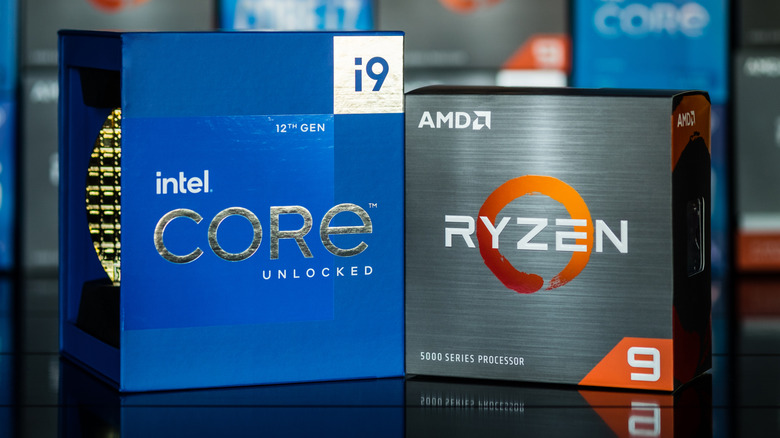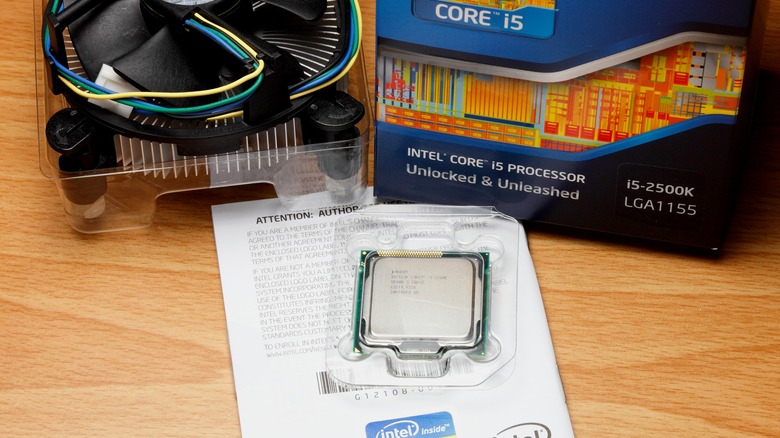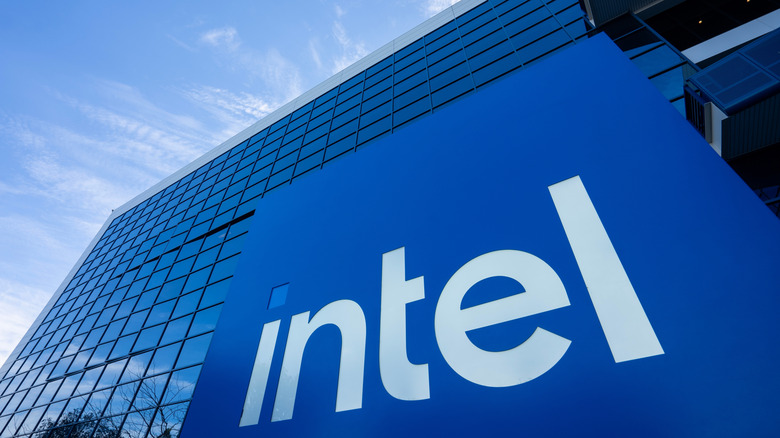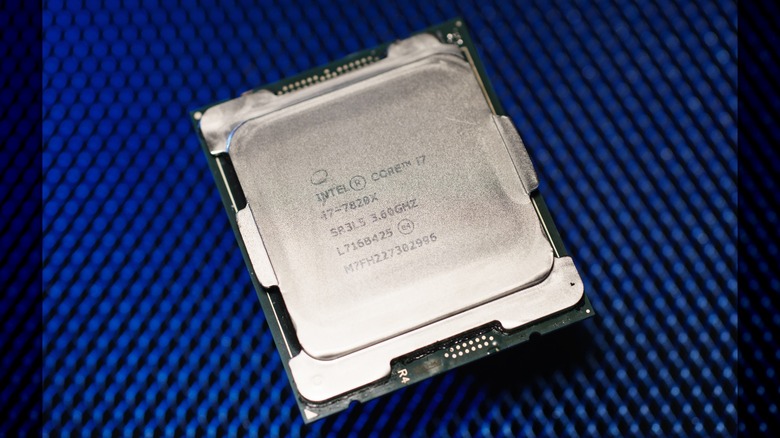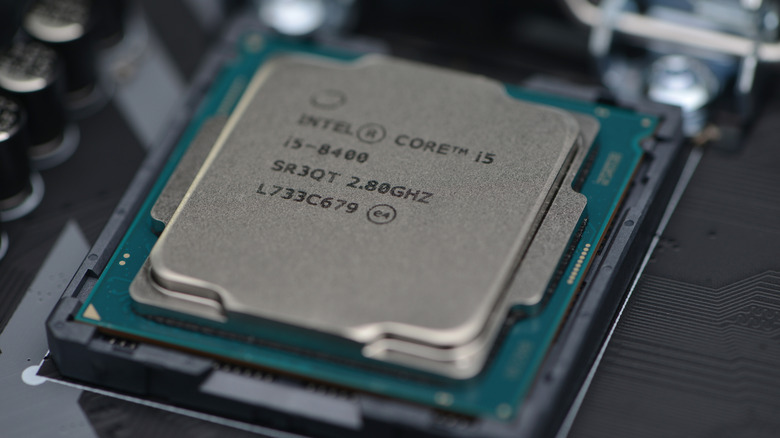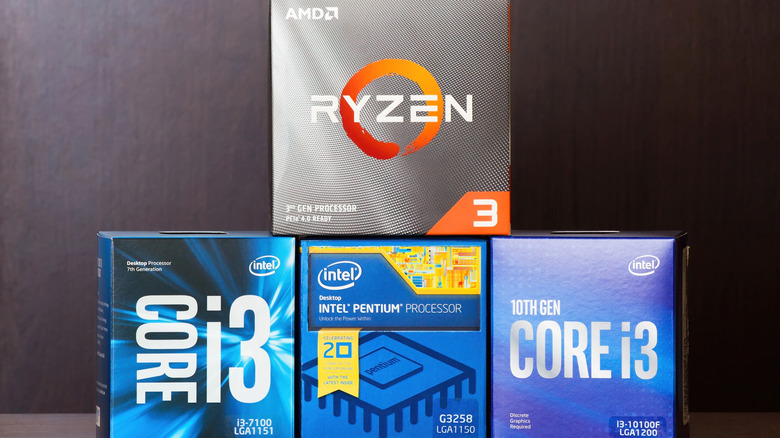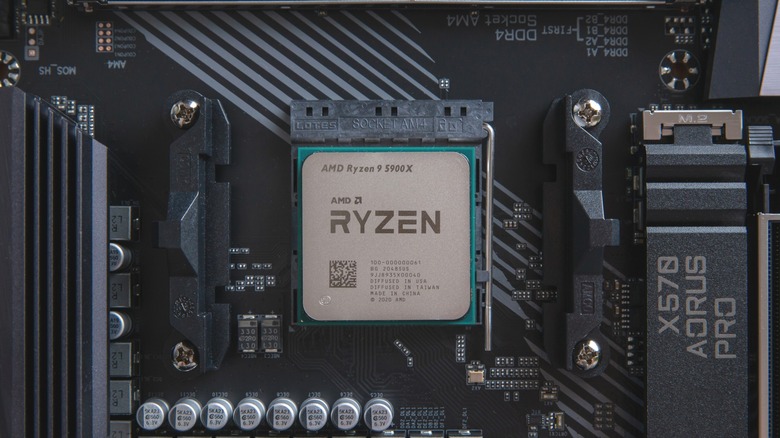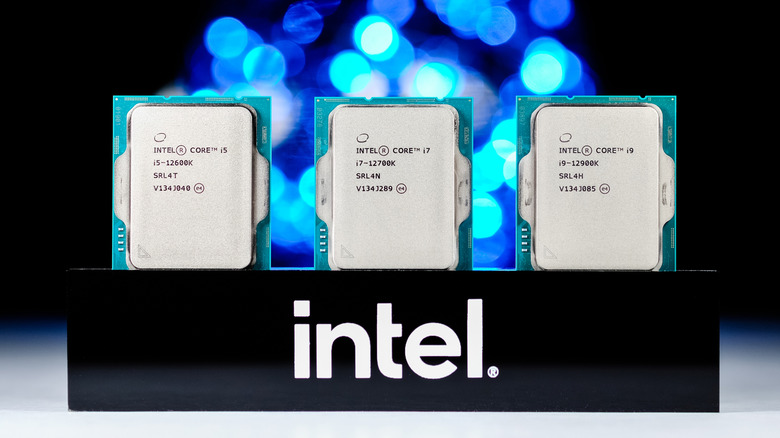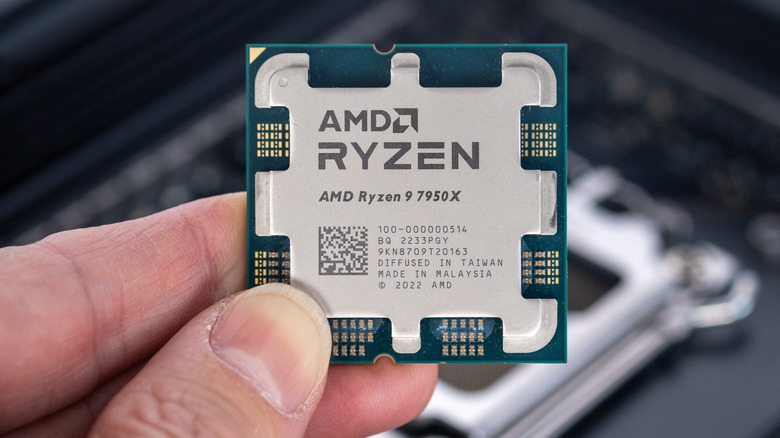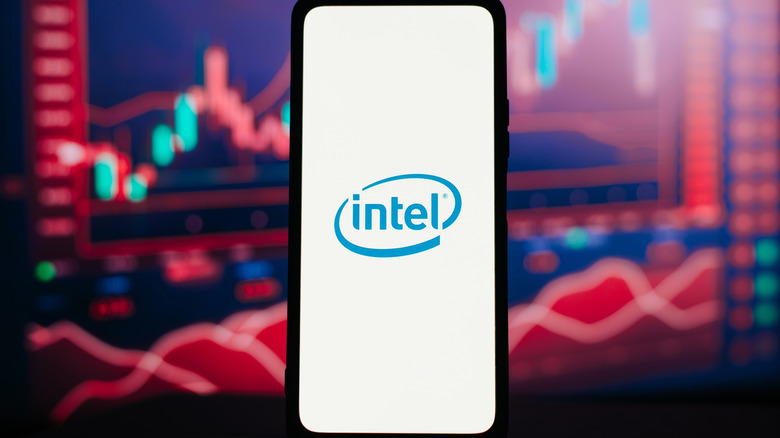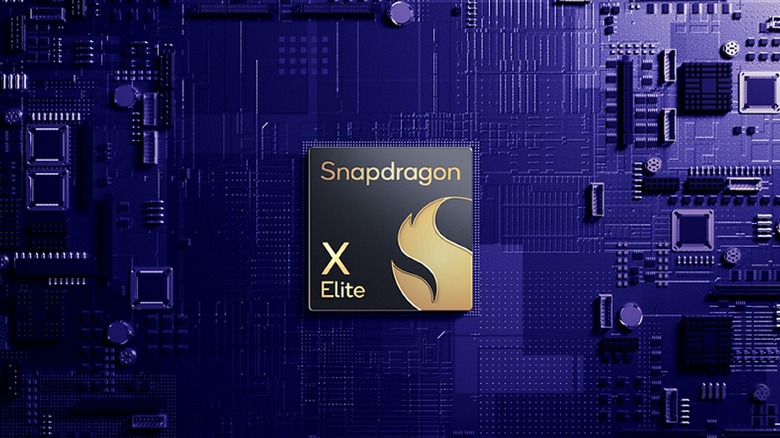Why Intel Lost Its CPU Crown To AMD (And How Ryzen Changed The Game)
We may receive a commission on purchases made from links.
Intel and AMD have been the two dominant names in the desktop CPU space for decades, trading blows and going toe-to-toe in the quest for gamers' hard-earned dollars. Still, despite AMD's many innovations over the years — such as the first-ever 5 GHz CPU — there was a time when Intel seemed like the only game in town, dominating market share and CPU performance alike.
This isn't to say that AMD was necessarily making bad CPUs — the late-2000s Phenom II X4 CPUs were very competitive — only that Intel was on a genuine hot streak from the mid-2000s, with its offerings generally the better choice whether at the high or budget end of the CPU market. Even AMD's most competitive years never saw it truly get the upper hand over Intel during this decade. But that changed in the mid-late 2010s, when a combination of Intel complacency and AMD innovation turned the tables squarely in AMD's favor, winning over legions of gamers in the process.
In light of Intel's much-publicized recent struggles, it's going to be interesting to look back at the past decade and a half or so of CPUs and see how and where things went so badly wrong for Intel — and why they went so right for AMD. Let's get started.
Intel on top (2008 - 2011)
In the mid- to late-2000s, Intel was arguably the king of the hill, at least as far as consumer desktop CPUs were concerned. The company's so-called tick tock model, where it alternated between launching refined versions of a CPU on a new manufacturing process — the tick — and launching all-new CPUs based on that previously introduced process — the tock — had given birth to CPUs like 2009's Core i7 870 and Core i5 750. These tock CPUs greatly impressed reviewers, with AnandTech praising the sub-$200 latter CPU as "arguably the best processor of 2009."
AMD was making decent CPUs at this time, but the company was mostly playing catch-up to Intel. For example, its Phenom II X4 970 could only match the Core i5 750 at best in most tests, with the gap between the two CPUs widening with some CPU overclocking. AMD couldn't win on value, either, as that particular offering cost about the same as Intel's equivalent processor.
However, in 2011 Intel and AMD released two CPU architectures that defined the market for the next few years. Intel debuted the Sandy Bridge CPUs, which had great per-core performance and became one of the best gaming processors on the market. AMD, on the other hand, gambled on Bulldozer, which focused on parallel processing and multi-threaded tasks. Sadly for AMD, Bulldozer's poor single-thread performance meant it trailed behind Sandy Bridge significantly.
Dominance and hints of trouble (2012 - 2015)
Intel kept the crown for the next few years as AMD floundered with its performance CPUs. AMD tried to fix the Bulldozer failure with Piledriver in 2012, but reviewers remained relatively unenthused. AMD made one final play for the crown in 2013 with the FX-9590, cranking power consumption to try and compete with Intel. Sure, it was the first 5GHz CPU ever, but even the best motherboard manufacturers struggled to offer components that could power it reliably.
AMD's struggles meant Intel didn't have to do much to keep its position at the top. Intel stuck with four cores for its mainstream CPUs, with only minor performance improvements from 2011's Sandy Bridge to 2012's Ivy Bridge, and from Ivy Bridge to 2013's Haswell. AnandTech's numbers from the time show around a 10% improvement between generations, but only in certain synthetic benchmarks — gaming performance was essentially identical between all three generations. Looking back, it's not hard to conclude that Intel was coasting by this point.
The mid-2010s were also when the first hints of trouble started emerging. Intel's die shrink to 22nm for Ivy Bridge and Haswell happened without a hitch, but the company's move to 14nm didn't go as planned. In 2013, Intel announced that it would have to delay its 14nm Broadwell CPUs to 2014, allegedly due to low production yields. To add further insult to injury, it wasn't until 2015 that Intel got its full-fat Broadwell desktop CPUs to market.
The 14 nm nightmare begins (2015)
That delay with 14nm would set the tone for the next half decade's worth of Intel CPUs. Not that it seemed too troubling at the start. Broadwell was late, sure, but Skylake followed soon after, with the new generation introducing a new platform and support for DDR4 memory — even if performance improvements weren't huge.
Performance uplifts for gamers had been minor enough that the question of whether it was worth upgrading from Sandy Bridge was still up in the air as of the mid-2010s. The reality was that 2011's finest was still capable even in the most demanding games of the time, especially when overclocked. However, Intel wasn't just haunted by the specter of its past by this point, as it was also having issues with its future. After launching Skylake in 2015, Intel confirmed that its Kaby Lake successor would stay on the 14nm process due to production issues with 10nm, disrupting the vaunted tick tock cadence.
This proved to be more than a one-off, too. Intel dropped tick tock outright in 2016, introducing a new three-stage model called Process-Architecture-Optimization. Still, extending the timeline didn't help Intel much, and a succession of 14nm desktop CPU generations – Coffee Lake, Coffee Lake Refresh, Comet Lake, and Rocket Lake — would follow over the next five years before Intel finally mastered the 10nm process node. However, unlike its first stumble, this 14nm stagnation would have disastrous effects for Intel.
AMD rising (2017)
Intel probably had enough of a headache from its much-publicized struggles with 10nm, so the last thing it needed was AMD to come out with an all-new — and highly competitive — family of CPUs. Of course, that's precisely what AMD did. In early 2017 AMD launched its first Ryzen CPU, the Zen 1, shaking the market up by bringing more threads at a lower price than Intel's competing sixth- and seventh-generation CPUs.
Intel had traditionally reserved eight-core and higher CPUs for its pricey high-end desktop (HEDT) offerings, but AMD brought it to the masses, launching three eight-core, 16-thread CPUs that year. Despite some teething issues, tech outlets were generally positive about the company's new CPUs, especially when it came to multithreaded performance. The AMD vs. Intel fight was still in the balance, but the former had just scored a decisive blow. In the words of PCWorld, AMD was indeed back.
However, AMD wouldn't just take it to Intel's mainstream CPUs, as AMD had its sights on the whole x86 market, and that involved HEDT as well. Its Ryzen-based Threadripper HEDT CPUs were also a success, with the top-end 1950X challenging Intel's closest rival, the Core i9-7900X, to the point where Ars Technica named Threadripper "the High End Desktop (HEDT) platform to beat." By the end of 2017, AMD's share of the desktop CPU market had climbed to 12%, up from 9.9% a year prior. Things were looking up.
Competition heats up (2017 - 2018)
Intel didn't take Ryzen's launch lying down, of course. It may have been stuck on 14 nm, but it at least deigned to offer mainstream PC users the option of more than four cores with Coffee Lake, which launched in 2017. Coffee Lake saw Intel bump core count to six cores on its i7 and i5 chips, with the top-of-the-line i7-8700K sporting six cores and 12 threads.
To Intel's credit, Coffee Lake wasn't a bad release; the i7-8700K topped the charts, while the $260 i5-8600K offered genuine competition to AMD's lower-end Ryzen 1600X. The six-core, six-thread i5-8400 was also a great CPU, especially for budget gaming. AMD had definitely rocked the CPU world with Ryzen, but Coffee Lake showed that Intel wasn't quite ready to give up, even if it was starting to have to play catchup to AMD.
Where Intel was stuck on 14nm, AMD moved to 12nm with the 2000-series Ryzen CPUs, which launched in early 2018 with significantly better performance than the first-generation Ryzen CPUs. They still lagged behind Intel's CPUs in some gaming scenarios but offered impressive gains in highly-threaded productivity workloads. It wasn't an outright win for AMD, but Zen+ CPUs were very competitive, and generally at lower prices.
The tides begin to turn (2019 - 2020)
Ryzen had rocked Intel's stranglehold on the CPU market, but AMD had yet to truly wrest the crown away from the old king. Late 2018's Coffee Lake Refresh would keep Intel at the top, at least for gaming, all while finally introducing genuine eight-core CPUs in the form of the Core i9-9900K and i7-9700K. By this point, AMD had made significant inroads into the desktop CPU market, with the company sitting at an impressive 17% share at the end of Q1 2019.
Things were about to get even better, though. AMD launched its Ryzen 3000 — Zen 2 — CPUs in July, and these new processors offered massive upgrades over its prior CPUs. The company's Ryzen 9 3900X and Ryzen 7 3700X led the charge, and while neither CPU quite managed to beat Intel's flagship i9 and i7 in gaming they came close enough that many gamers — myself included — felt that the extra cores and lower price made up for the minor disadvantage in gaming performance. In KitGuru's words, the Ryzen 3000-series CPUs showed AMD "punching at performance levels far beyond its price point." The underdog was starting to hit back — hard.
It wasn't just reviewers that loved AMD's Zen 2 CPUs. Data from German retailer Mindfactory.de (compiled and presented on Reddit by user ingebor) showed AMD outselling Intel 10 to 1 from March 2019 to April 2020, an unimaginable state of affairs just one or two years earlier. Unfortunately for Intel, the worst was yet to come.
The Zen 3 knockout blow (2020)
Zen 2 put Intel on the back foot, pushing AMD to new heights in terms of sales and computing performance, but Intel could at least hold on to the crown of fastest gaming processor. The Zen 2 was good, but none of that generation of CPUs could consistently outpace the Intel i7-9700K, let alone its higher-end i9 part. That all changed when AMD's 5000-series Zen 3 CPUs debuted in October 2020.
AMD launched four Zen 3 CPUs at once, offering early adopters the choice of the 16- and 12-core AMD Ryzen 9 5950X and Ryzen 9 5900X, the 8-core Ryzen 7 5800X, and the 6-core Ryzen 5 5600X. AMD also claimed that the 5900X was the "world's best gaming CPU," all while touting significant instructions per core (IPC) improvements over Zen 2. It was shaping up to be an exciting launch, although it remained to be seen whether AMD's numbers were real or marketing exaggerations.
As it turned out, AMD was telling the truth. Reviewers mostly verified AMD's performance claims, and, in almost all workloads, AMD's new 7nm CPUs were miles ahead of Intel's Comet Lake CPUs. It was a clean sweep, too. The Ryzen 9s dominated productivity benchmarks, while even the lowly six-core Ryzen 5 5600X tied or beat Intel's 10-core parts in gaming tests. TechPowerUp opined that Zen 3 "simply outclasses Intel's Comet Lake chips at every price point they compete in," and it was hard not to see this as the dawn of a new — AMD-led — age for CPUs.
Intel fights back (2021 - 2022)
In the wake of Zen 3, Intel's Rocket Lake CPUs launched in 2021 to little fanfare and success. These were 10nm designs backported to 14nm to achieve the clock speeds Intel needed to be competitive, but the new designs didn't help much. Rocket Lake CPUs ran hotter and consumed more power than AMD's equivalents without offering significantly better performance and even trailing in multi-threaded scenarios. This was on top of more fabrication woes, with the company already announcing in its Q2 2020 earnings report that it would have to push its 7nm CPUs back by around six months, making for a late 2022 launch at best.
The situation would get a lot better for Intel in late 2021, though, as it finally managed to break out of the 14nm trap with Alder Lake, its first true 10nm CPU generation. Alder Lake was a breath of fresh air, introducing a hybrid architecture with performance (P) and efficient (E) cores that brought big performance gains. Intel even managed to retake the gaming crown from AMD with the Intel Core i9-12900K — albeit at the cost of a higher power consumption than the AMD Ryzen 9 5900X.
In a reversal of fates, Intel was now the company trying to push prices down to compete, and it bore some fruit. AnandTech, for example, concluded that the Intel Core i7-12700K and Core i5-12600K were the "best all-round performers at their respective price points." No mean feat for a company that had been on the back foot for years.
AMD pushes the envelope again (2022 - 2023)
Alder Lake was something of a triumph for Intel, but, as it probably knew all too well, playing catch-up meant that AMD could very easily leave it behind again with new CPUs. AMD duly obliged with its 7000-series Zen 4 CPUs, which debuted in September 2022 on an all-new platform and CPU socket, with DDR5 memory support and PCIe 5.0 in tow.
The world's tech press loved Zen 4, even though some outlets expressed concerns about the pricing of the two CPUs that AMD chose to lead with, namely the AMD Ryzen 9 7950X and Ryzen 5 7600X. These showcased significant performance gains over their predecessors in most scenarios, handing the crown back to AMD, but the company wasn't content with winning at the top end. AMD would follow up these flagship parts with non-X versions of its 7000-series CPUs, sacrificing some performance in exchange for lower prices and temperatures. It also launched the AMD Ryzen 7 7800X3D, which still ranks as the best AMD gaming CPU in 2024.
Intel didn't sit still through all of this, of course. It launched Raptor Lake in October 2022, hot on the heels of AMD's Zen 4. Intel continued to try and win the value game, retaining support for DDR4 memory and more affordable motherboards compared to Zen 4's expensive array of early motherboard options.
Intel's struggles continue (2024)
There are still a few more months of 2024 to go as of the time of writing, but it's likely safe to say that 2024 will rank as one of Intel's worst years ever. For a start, there are ongoing CPU failures and instability issues with the company's high-end 13th and 14th-generation Raptor Lake and Raptor Lake Refresh CPUs. While Intel seems to have developed a fix, it definitely could have done without all the negative press.
Intel's new CPUs didn't help the situation much, either. Arrow Lake launched in October with a new naming scheme, but failed to turn Intel's fortunes around. The new CPUs were much more efficient than previous-gen parts, but gaming regressions, inconsistent performance, and poor pricing made for middling reviews and underwhelming sales. It looks like Intel's paying dearly for its recent troubles — it has laid off more than 10,000 employees thus far in 2024 and posted a $16.64 billion loss in Q3, as revealed in an Intel press release. That said, higher-than-expected revenue may hint at rosier years ahead.
AMD hasn't had a perfect 2024 either, with the August launch of its Zen 5 CPUs proving less successful than prior generations, at least some of which was likely due to disappointing generational gains over Zen 4. Still, with outlets like TechPowerUp reporting a record-high 23.9% market share of the desktop CPU market in Q1, matched by AMD's a 29% year-on-year increase in client revenue at the end of Q3 mean that it's still been a good year. In fact, it might just get better when the 9000-series X3D CPUs make their way to gamers.
Strange bedfellows (2024 onward)
So far, we've talked about how Intel and AMD have gone toe-to-toe in the desktop CPU market, with the latter looking like it now has the upper hand amongst enthusiasts and gamers. Despite this rivalry, the two companies have recently teamed up to fight off a new contender — Arm.
Qualcomm's Snapdragon X CPUs, the X-Elite and X Plus, are Arm-based processors designed not for smartphones, but for Windows laptops. While it's not yet the full-fat traditional Windows experience — Arm processors can't natively run x86 code, which is what your standard Intel or AMD CPU uses — these Qualcomm chips offer excellent battery life and performance for laptops, sometimes at lower prices than AMD, Intel, or Apple-powered laptops.
So, in a strange twist of fate, these two long-time rivals announced that they were joining forces in mid-October to, in Intel's words, "shape the future of the world's most widely used computing architecture." By which they mean, of course, x86, the architecture that both companies use in their CPUs. Google, Broadcom, Dell, Lenovo, and Microsoft — to name a few — are all also part of this new advisory group, and it's going to be interesting to see how these corporations plan to keep the threat of Arm at bay. That is if Arm and Qualcomm's legal tussle, as reported by Bloomberg, doesn't end up killing Windows on Arm before it even manages to get off the ground.
